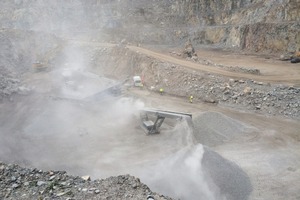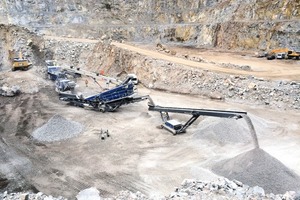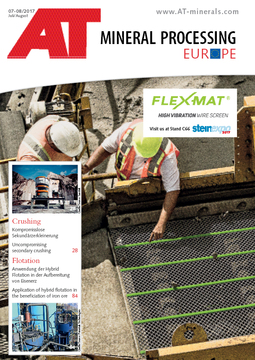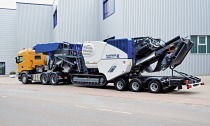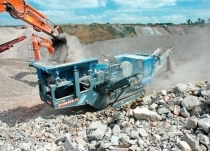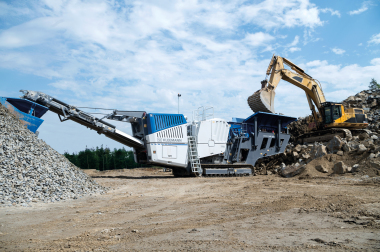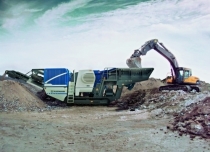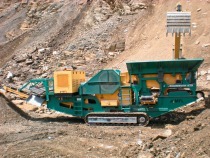Dust reduction during operation of mobile crushers
The spray jets are installed at the crusher feed and discharge and, if required, at the side discharge belt. They wet the feed and discharge material with water. In this way, dust emissions are suppressed very effectively, at low cost, to a minimum. All crushers from Kleemann can be equipped with this low-pressure spraying system. Especially in densely populated areas, such a spray system at the crusher is recommended. It is used primarily to protect the employees working in the immediate vicinity of the crusher. In addition to the wearing of protective masks and comprehensive instruction on the dangers of dust exposure, this constitutes an important health and safety measure. In a cooperation project between BG Rohstoffe und chemische Industrie (Employers Liability Insurance Association for the German Raw Materials and Chemicals Industry), the Institute for Research of Hazardous Substances and the BU University of Wuppertal, the influence of a low-pressure spraying system on dust generation and reduction at mobile crushers was studied.
Study on “Dust formation and dust reduction at mobile crushers”
Measurements of the fine dust concentration were conducted at three mobile crushers from Kleemann in a granite application. During the measurements, the train of installations consisting of a mobile MC 120 Z jaw crusher, a mobile MCO 11 cone crusher and a mobile MS 19 D screen produced an average of 240 t/h. The two crushers were equipped with a low-pressure spraying system, which wet the feed and discharge material. To obtain a realistic result, the measurements were performed for six hours in typical operating conditions and in stable weather conditions. Studied were respirable (E) and alveolar (A) dusts as well as the silica concentration in the A dust. Several optical particle counters as well as meteorological measurement devices were positioned in the machine train.
Visible and measurable dust reduction
The measurements were conducted in two series of tests:
all spray jets were switched on and off in alternating intervals of 30 minutes and
the spray jet at the crusher feed of the jaw crusher was switched on and off in different intervals while the remaining jets were switched on throughout.
The results from the measurement were positive throughout. The limits for A and E dust were reliably met with the application of the low-pressure spraying system. Even the current limit for silica fine dust was not exceeded with exception of one area directly at the cone crusher, which, however, is not a workplace. The requirements for health and safety in respect of the inhalation exposure of the employees as well as environmental protection with regard to emission protection requirements are met fully with the use of this low-pressure spraying system.
//www.kleemann.info" target="_blank" >www.kleemann.info:www.kleemann.info

